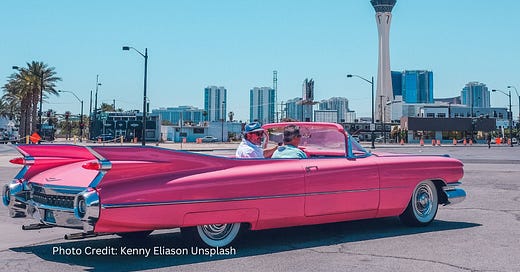Last week Meta launched “Threads” and I have to admit that even though I have A LOT of feelings about social media-it was pretty amazing to see how many people onboarded last weekend. That said, Thread’s success onboarding over 100 million people in 3 days touches on something that I want all creators to focus on-building your email list or newsletter subscribers. Meta has an eco-system of users that it can tap into and send and share new products, goods and services.
If you’re not building an email list or newsletter-let this be a lesson about why it’s so important to focus on building your list. As creators who are looking to monetize your brands the strategy of just posting onto social media and hoping that you’ll get sales is not a winning strategy.
This is a really stressful long-term monetization strategy.
Especially as I cover the topic of creating and selling products. As podcasters and other creators begin monetizing their platforms they will earn money in one or more of the following ways:
Ad revenue
Ads in podcasts
Ad revenue connected to a blog or podcast
Brand Partnerships
Sponsored content
Creating products, however, has been the breakthrough monetization strategy for a lot of creators that I follow. Why is that? Ask yourself the following question-what happens when ads stop paying, brands pause sponsoring content or you can’t find the right brand partnership? During those times you can lean into selling YOUR PRODUCTS. These are assets that only YOU can control.
Here are some examples of what other creators have created and have made a huge difference to their finances of their businesses.
Membership communities-These create predictable revenue.
Newsletters-A huge opportunity to connect with your audience weekly and earn revenue from selling other products and resources direct to your community.
Ebooks-You can leverage ebooks in so many different ways. I LOVE writing ebooks. But, my preferred type of ebooks are actually fiction based. I make money writing romances.
Courses
Workshops
Conferences (in-person and online)
This month I’m going to share the Good, the Bad and the Ugly of product creation. I’ll share what I’ve learned the hard way and why ultimately developing and creating unique to you digital products is an important part of building your online brand’s revenue.
Coming Up: Monetization Boot Camp (September)
This will be an intensive 4 week in-person (online) monetization boot camp held in September. I will share a savings code for the bootcamp during Podcast Movement Denver with the Podcasters Getting Paid Community. The goal of the Monetization Boot Camp is to help students with the following:
Find areas within their brand to monetize
Design a monetization strategy specific to your personal brand.
Brainstorm and create an income stream that will build passive income for your brand.
Help podcasters create systems AND BEGIN pitching
Spaces will go on sale between starting August 24th (First day of Podcast Movement) I’m giving you a head’s up now as the price will be between $300-$500. I used to have to side-hustle for these types of resources in the past, so I try to give a head’s up so that you can plan between now and when doors open for the boot camp.
Shelley Marmor Affiliate Income Case Study
Before I start sharing ways to design products to sell on your own platforms, I did want to share an affiliate marketing case study.
I absolutely LOVE the following monetization story. It’s specific to affiliate marketing. I’m going to start sharing these because I want you to starting recognizing monetization strategies that other creators are using.
I’ve listened to the following Niche Pursuits podcast more times than I can count and I’ve noticed a few things that I wanted to share with the Podcasters Getting Paid community.
Who: Shelly Marmor creator of the website Travel Mexico Solo
What does she do? Make money affiliate marketing with her website. She earned $272,000 in one year after making only $8,000 the year before
Does she use social media: NO
SHE DOESN’T USE SOCIAL MEDIA (yes, I wrote that in all caps)
Why in the heck is Michelle (me) covering this? Because there is more than one way to do a thing. That thing I’m constantly talking about is monetization.
Does she have a podcast? No. But, she heavily leverages podcast content on other people’s platforms. And this case study makes sense for podcasters.
Trust me.
Paid subscribers read on…




